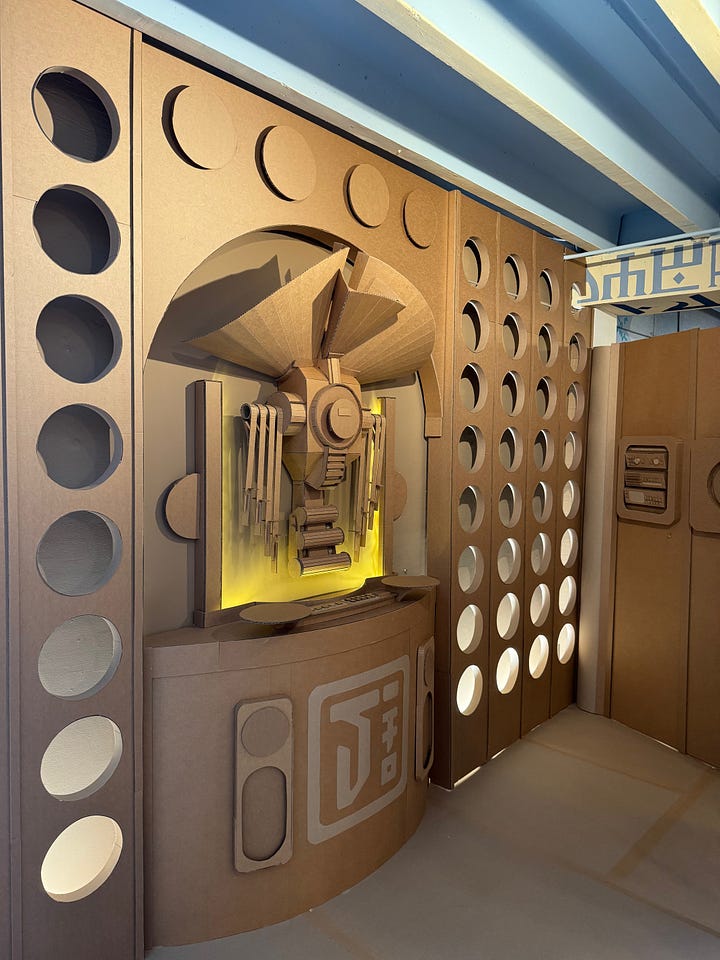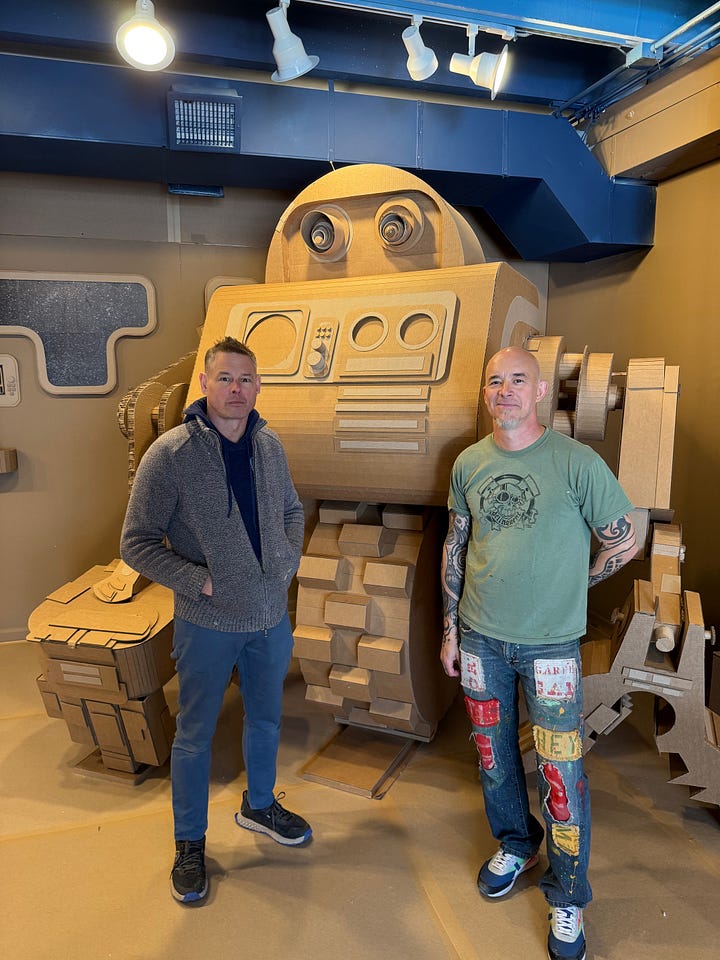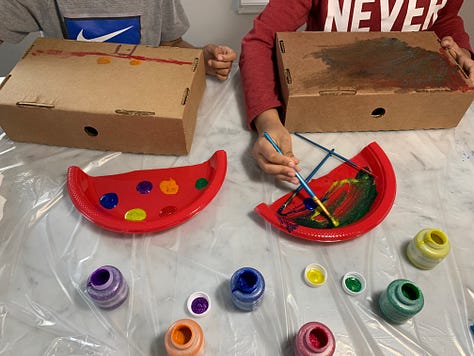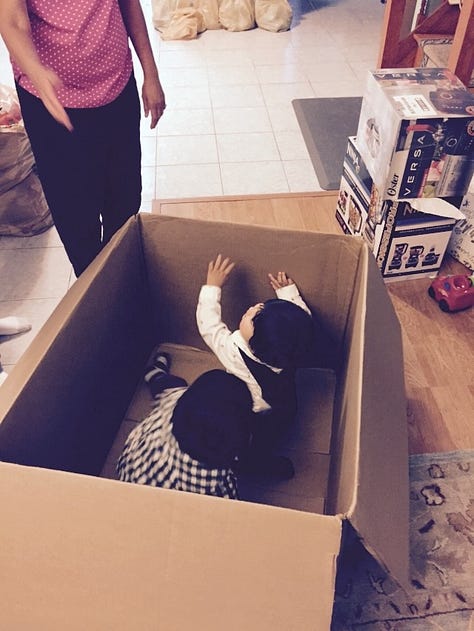What ChatGPT is changing about Creativity
And how the "Anti-AI" art show in Asbury Park is a wake up call
On Friday, I visited Asbury Park's "Anti-AI" Art Show, and the magic that artists Michael LaVallee (Better known as Porkchop) and Bradley Hoffer have pulled off with their works reveals something deeper than just a critique of artificial intelligence. Their show is a reminder of what we risk losing—not just in art, but in the way we engage with creativity itself.
The ArtSpot, a new art haven just steps from the Atlantic Ocean, is the kind of place that feels like a response to the times. Asbury Park has long been known for its music scene—Bruce Springsteen's hometown—but today, it's increasingly becoming a vibrant hub for artists, makers, and cultural experimentation. In this show, longtime friends and collaborators Porkchop and Hoffer strip their work down to its most basic form: cardboard. No color, no embellishment—just light, shadow, and precision.
What stands out most to me from the cardboard artworks is the tension they capture of being both monumental and yet fragile and ephemeral. These are not small projects–filling the art studio with a range of explorations from a robot, to apparel, to a space ship control station. Each in their own right are impressive for their detail, the subtle interplay of shadow, depth, and layering. There is no color beyond the beige of the cardboard and yet the art feels alive and substantial. As you engage with the artwork, more details emerge that all speak to the careful craft of bending, cutting, and placing paper to fit the distinctly human imagination.


Why the Anti-AI Art show challenges us to think about AI
Have you ever made a cardboard fort as a kid? Or maybe a car, like my son in the picture? A common parenting experience is buying your child a new toy, only to watch them become more fascinated with the box it came in. The toy—let's say a truck—has a defined form, a set purpose, and an expected way to interact with it. The cardboard box, on the other hand, is a blank slate. It can be anything—a spaceship, a house, a costume. It invites creativity, exploration, and transformation. Below you see the various explorations my kids have had through the years with boxes.
Cardboard is usually just a container, something meant to be thrown away. But in this show, it becomes art. It forces us to reconsider what we overlook—not just in objects, but in effort, in process, and in the slow work of making something real. It also speaks to the importance of impermanence, made of paper, this artwork is for now, in this present moment.



What Porkchop and Hoffer are reclaiming through cardboard is what philosopher Matthew Crawford calls "the world beyond your head" – the tactile engagement with physical materials that grounds us in reality. I first was introduced to Crawford’s writing when I read about his journey from a Think Tank to running a mechanic shop in his book Shop Class as Soulcraft. In Crawford’s body of work, he speaks to our detachment from the material world and from using our hands. He references how a shop teacher once said:
“Without the opportunity to learn through the hands, the world remains abstract and distant, and the passions for learning will not be engaged”
This sentiment of connection to the medium of our work is exactly what PorkChop and Hoffer are speaking to. When they cut, fold, and assemble cardboard, they're navigating constraints that AI simply doesn't encounter. Every slice of the blade represents a decision that can't be undone, every structural solution emerges from physical experimentation rather than algorithmic probability. This embodied knowledge—knowing not just intellectually but through your hands—is precisely what's at stake in our increasingly AI-mediated world.
It’s Ironic, But I Used AI on this Article
There's an undeniable irony in writing about the value of human-made art while using AI tools to help shape these very thoughts. In drafting this piece, I've collaborated with AI to refine my language and challenge my thinking—a fact that doesn't invalidate the exhibition's message but rather complicates it in necessary ways.
Like the cardboard in Porkchop and Hoffer's hands, AI is ultimately a tool. The difference lies in how we employ it: do we outsource our thinking entirely, or do we maintain the "rough edge" of our own discernment? Do we accept what the algorithm produces without question, or do we approach it with the same critical eye we'd bring to any human collaboration?
The cardboard artists remind us that the material itself isn't what matters most—it's the relationship between creator and creation. Similarly, our relationship with AI doesn't have to be one of passive consumption. We can engage with it actively, pushing back against its suggestions, questioning its assumptions, and using it to amplify rather than replace our own creative instincts.
And Here’s what ChatGPT Wanted Me to Say
The AI wanted me to write about the perfection of AI’s output, the expediency of the experience, and ultimately the downside of missing out on the messy middle. It wrote:
“The issue isn't that AI creates—it's that it bypasses the vital space between conception and completion, the messy middle where human creativity actually lives.”
Sounds true, but it isn’t quite aligned with my experience. I do navigate the messy middle. In fact, sometimes when I've used AI to write an email, I find that I spend even more time on the email than I would have without AI. When I engage AI, I'm actually trying to figure out why my view is different from the median view of humanity. Do I really have anything new to contribute right now? If the AI can predict what I wanted to say and say it better than me, what's the need for my own writing?
And that’s the reason that this Cardboard show matters the most. While it is labeled an Anti-Ai show, I don’t think it's a rejection of technology. Instead, it's a call to re-examine our own humanity. When we stare at the blank canvas of a document, how do we rekindle the imagination of our youth seeing a cardboard box? It reminds us that as we engage with AI's capabilities, we need to first understand and appreciate the irreplaceable humanity of the creative process. To be human is to see through our imagination more than what’s in front of us. ChatGPT may tell us a cardboard box is a container, we need to keep showing each other that it's so much more.
What’s your experience with AI and Creativity?




Ah, this post gets at the point of something I think about all the time now. Creativity lies in not in the end product, but the human process. And yes, AI can definitely feed into that process. But if it replaces it, we lose something vital.